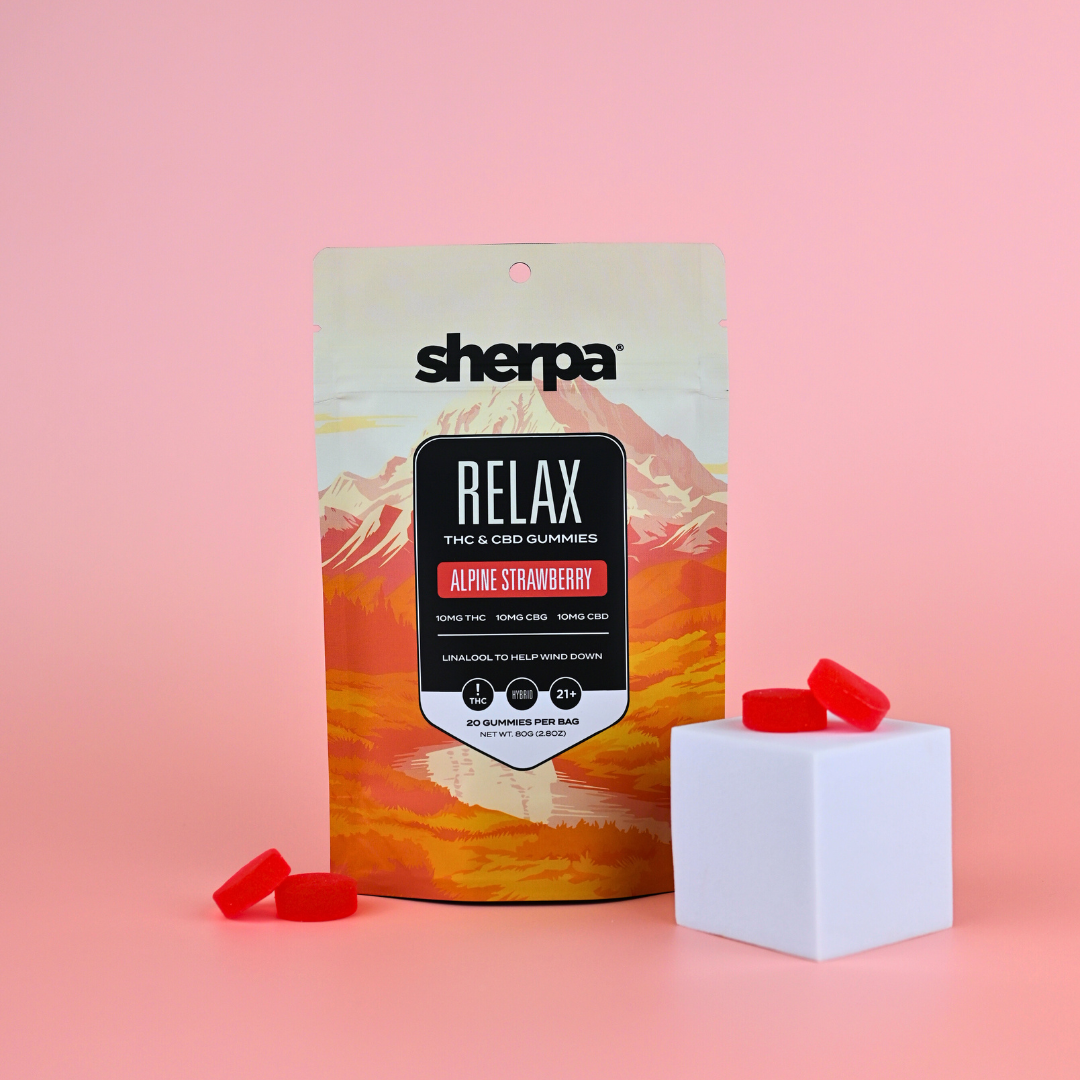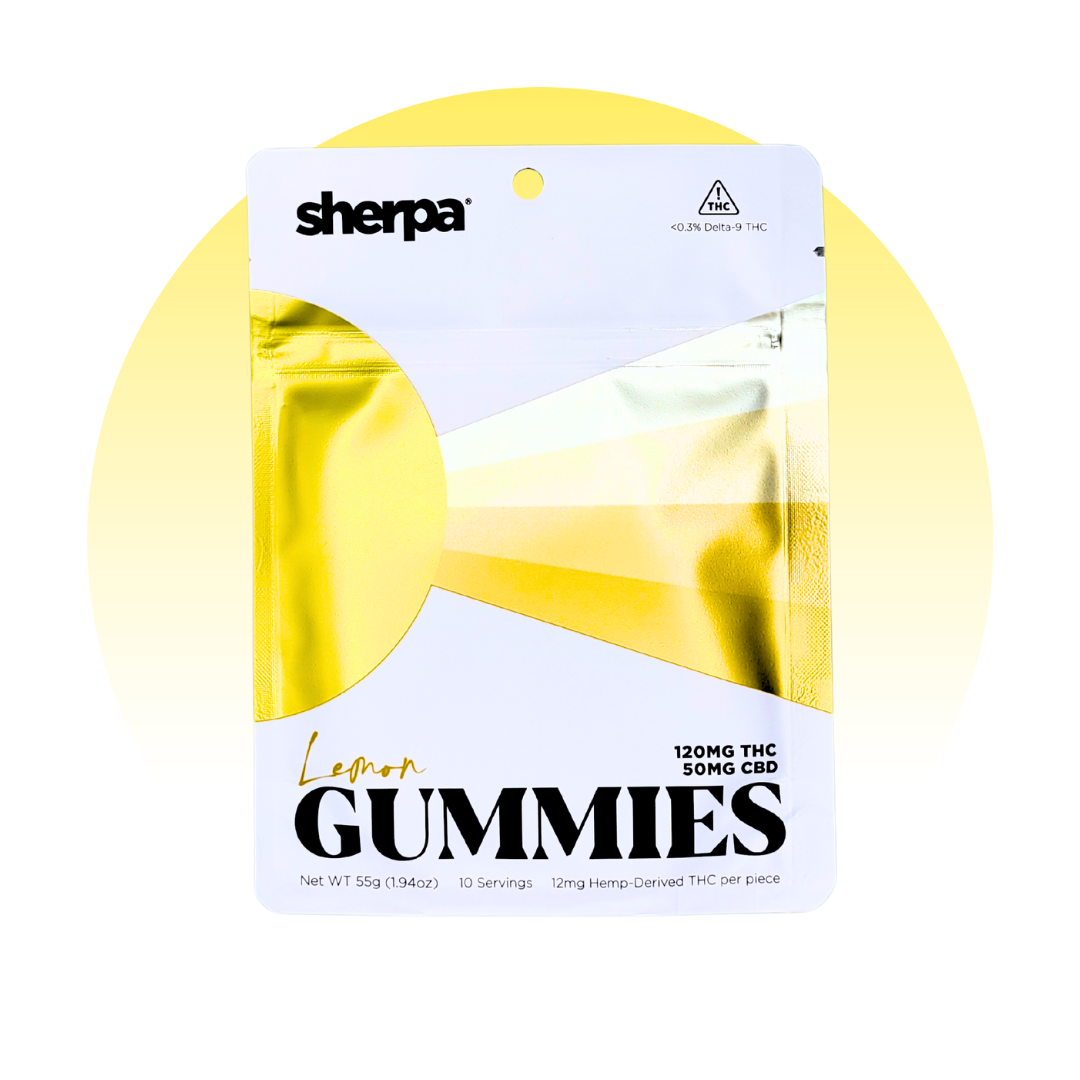
Our Blog
Understanding the Entourage Effect
Understanding the Entourage Effect
Cannabis is a hugely fascinating plant. Honestly, it just might be the closest thing to magic that we have in real life. It's hugely complex, too, and we're just now understanding how all of the compounds contained within can be beneficial to our lives.
When it comes to cannabis edibles, the interaction between cannabinoids, terpenes, and other compounds is especially important, influencing not only the flavor and aroma of the product but also the way it affects your body and mind. This is where the concept of the entourage effect comes into play — a term for the phenomenon of how different cannabis compounds interact with each other to enhance or modify their effects.
While most folks are familiar with the main psychoactive compound in cannabis, THC, and its non-intoxicating counterpart, CBD, there is so much more happening behind the scenes when you consume cannabis. Here we're going to unpack what the entourage effect is, how it impacts edibles, and why understanding these interactions can help you choose the right cannabis product for your needs.
What Is the Entourage Effect?
So first things first — the entourage effect is the theory that cannabinoids, terpenes, and other compounds in the cannabis plant work together synergistically to create a broader, more nuanced effect than any one compound could achieve alone. The term was first introduced by researchers Raphael Mechoulam and Shimon Ben-Shabat in 1998, who discovered that compounds in cannabis work better together than in isolation.
In simple terms, the entourage effect suggests that the various elements of cannabis — THC, CBD, terpenes, flavonoids, and other lesser-known compounds — interact with each other to amplify or modify the effects of each. Think of it as a team effort, where each member plays a role in enhancing the overall performance. A whole that's greater than the sum of its parts.
With that in mind, let's take a look at each discrete "part" to get a better understanding of that whole.
The Key Compounds Involved in the Entourage Effect
To understand how the entourage effect works, you have to get acquainted with the key players involved. Here's a breakdown of the most influential compounds in cannabis that contribute to the entourage effect:
Cannabinoids: The Heavy Hitters
Cannabinoids are the primary chemical compounds in cannabis that interact with the body's endocannabinoid system, a complex network of receptors and neurotransmitters that regulate various physiological processes, such as mood, appetite, sleep, and pain. The two most well-known cannabinoids are tetrahydrocannabinol and cannabidiol — THC and CBD, respectively. Both of these compounds can have distinct effects on the body and mind.
- THC: This is the main psychoactive compound in cannabis and is responsible for the "high" feeling that many users experience. It binds to CB1 receptors in the brain, producing euphoric, intoxicating effects, along with increased appetite and potential pain relief.
- CBD: Unlike THC, CBD is non-intoxicating and does not produce a high. It has gained widespread popularity for its potential therapeutic benefits, though, including reducing anxiety, promoting relaxation, and easing pain and inflammation. CBD works by interacting with CB2 receptors and other non-cannabinoid receptors in the body.
While THC is often the main focus of cannabis products, many users find that the combination of THC and CBD in various ratios provides a more balanced and enjoyable experience. The entourage effect theory suggests that CBD can moderate the intoxicating effects of THC, providing a smoother, less anxious experience. Additionally, CBD might enhance THC's therapeutic effects, such as pain relief and anti-inflammatory benefits. Friends helping friends, it seems.
Terpenes: The Accent Notes
Terpenes are aromatic compounds found in cannabis — and many other plants — that give each strain its distinct scent and flavor. Beyond their great smells and tastes, though, terpenes also have an impact on the therapeutic effects of cannabis. There are over 100 different terpenes in cannabis, each with unique properties that contribute to the entourage effect.
Some of the most common terpenes you'll hear talked about in cannabis circles include:
- Myrcene: Often found in high concentrations in indica strains, myrcene has a musky, earthy scent and is thought to have sedative and anti-inflammatory properties. It's also thought to enhance the relaxing effects of THC, potentially increasing its psychoactive potency.
- Limonene: This citrus-scented terpene is known for its uplifting and anti-anxiety effects. Limonene may help enhance the mood-lifting effects of THC and could work in synergy with CBD to reduce stress.
- Linalool: With a floral lavender scent, linalool is believed to have calming, anti-anxiety, and sedative effects. This terpene could amplify the relaxing benefits of cannabis and help with sleep and stress relief.
- Pinene: This terpene has a fresh, pine-like aroma and is thought to have anti-inflammatory, bronchodilator — meaning airway-relaxing — and memory-enhancing properties. Pinene may counteract some of the memory-related side effects of THC, potentially helping with mental clarity.
- Caryophyllene: Known for its spicy, peppery scent, caryophyllene is unique because it interacts directly with the body's CB2 receptors. It has anti-inflammatory and pain-relieving properties, which could complement the therapeutic effects of THC and CBD.
When combined in cannabis edibles, terpenes can influence the overall experience, including the intensity of the high, the duration of effects, and the flavor. This is why cannabis strains with similar cannabinoid profiles can have different effects depending on their terpene content.
Flavonoids: The Unsung Heroes
There's probably a Flavor Flav joke somewhere in here, but we're serious people talking about serious chemistry, so we won't look for it. Instead, we'll just talk about Flavonoids. These are another important group of compounds in cannabis that contribute to the therapeutic and sensory profile of the plant. These are responsible for the color of cannabis flowers, but they also possess antioxidant, anti-inflammatory, and neuroprotective properties.
Some common flavonoids found in cannabis include:
- Cannaflavins: A unique group of flavonoids found specifically in cannabis, cannaflavins have been shown to possess strong anti-inflammatory properties. They may help amplify the pain-relieving effects of THC and CBD, potentially making edibles more effective for conditions like arthritis or chronic pain.
- Quercetin: Known for its antioxidant effects, quercetin may contribute to the entourage effect by supporting the immune system and may help modulate inflammation in the body. Overall, it just helps contribute to your wellness.
Other Cannabinoids and Compounds: The Grab Bag
While THC and CBD are the most widely studied cannabinoids, cannabis contains many other cannabinoids that contribute to the entourage effect. These include:
- Cannabichromene: Thought to have anti-inflammatory and pain-relieving properties, CBC may work in tandem with THC to enhance its therapeutic effects without intensifying its psychoactive effects.
- Cannabinol: Known for its sedative properties, CBN is often found in aged cannabis and may help with sleep issues. When combined with other cannabinoids and terpenes, CBN could enhance the relaxing and calming effects of cannabis edibles.
- Tetrahydrocannabivarin: A lesser-known cannabinoid, THCV is thought to have appetite-suppressing properties and may reduce the psychoactive effects of THC. Some users find that adding THCV to their regime can provide a more clear-headed, energizing experience.
The synergies between these various cannabinoids and terpenes can dramatically alter the effects of a cannabis edible. Whether you're looking for relaxation, relief from pain, increased focus, or a general sense of euphoria and childlike wonder, understanding how these compounds work together can help you find the right products for your needs.
How the Entourage Effect Works in Edibles
When you consume cannabis through edibles, the way the cannabinoids and terpenes interact with your body is slightly different than smoking or vaping. This is because edibles are processed in the liver, where THC is converted into a more potent form called 11-hydroxy-THC. This form of THC is more likely to produce intense psychoactive effects, which can be moderated by the presence of other cannabinoids and terpenes.
The entourage effect in edibles is particularly significant for a few reasons. First is the slow onset of effects. Edibles typically take longer to kick in compared to smoking or vaping, which means that the cannabinoids and terpenes have more time to interact with your body. The delayed onset allows for a more gradual build-up of effects, which may feel smoother and less overwhelming when multiple compounds work together.
Also important is your liver metabolism. When you eat a cannabis-infused product, your liver metabolizes THC into 11-hydroxy-THC, a compound that can produce more potent effects. However, cannabinoids like CBD and terpenes can modify this process, influencing how strong or long-lasting the effects will be. For example, CBD may reduce the intensity of the high caused by 11-hydroxy-THC, resulting in a more balanced experience.
How to Choose the Right Edibles for Your Desired Effects
So now that you understand the entourage effect and its key players, you can make some more informed choices when selecting cannabis edibles. Here are some tips for choosing the right products.
- Consider the Ratio of THC to CBD: If you're looking for a more balanced experience, look for edibles that contain both THC and CBD. A 1:1 ratio of THC to CBD is a popular option, as CBD can moderate the intoxicating effects of THC, creating a more manageable high.
- Look for Terpene Profiles: If you have specific therapeutic goals in mind like relaxation or pain relief, look for edibles that highlight particular terpenes, such as linalool for relaxation or limonene for mood enhancement.
- Understand the Strain and Its Effects: Each strain of cannabis has a unique combination of cannabinoids and terpenes, which means that the entourage effect will differ from one strain to another. Research the strain and its expected effects before selecting an edible.
- Don't Overdo It: Edibles can be potent, so start with a small dose and wait to see how your body reacts. Pay attention to how the different compounds in the edible make you feel and adjust your consumption as needed.
So there you have it! Armed with this knowledge, go out and find the right edibles — and the right experience — for you!
Some Final Thoughts on the Entourage Effect
So to bring things full circle, we'll reiterate that cannabis is absolutely fascinating. All of these synergistic interactions between cannabinoids, terpenes, and other compounds create a richer, more beautiful experience than any one compound could produce on its own. Whether you're seeking pain relief, relaxation, or simply a more enjoyable high, understanding the entourage effect can help you make smarter choices when selecting cannabis edibles.
Remember, the best experience comes from understanding what works for your body and choosing products that align with your needs. So, next time you're picking out an edible, think about the entourage effect and how the various compounds can work together to create the experience you're looking for!




